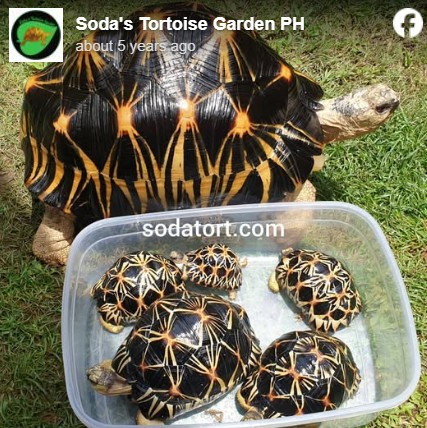Taking Care of Tortoises in the Philippines
by Dennis / @sodatort
Mar 31, 2010 (Last update: May 10, 2024)
There are a lot of articles about tortoises in the internet but there aren't a lot written for tortoise hobbyists in the Philippines. We usually get a lot of questions in our Facebook page, so this summarizes most of the questions that we get. I hope it helps!
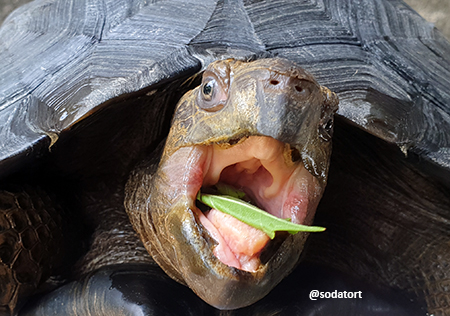
A healthy tortoise is a happy tortoise
I started writing this in 2009 when I first created this website with webs.com. Despite successfully breeding various tortoise species, I still learn something new every day. There is so much to learn just by talking to fellow hobbyists, doing research, joining forums and reading hundreds of posts and articles. My answers below describe how I do things that have worked for me since 1999. These methods can still improve and change over time.
Jump to:
To get started, simply read the first two below. It has a mix of everything you need and this updated version is more organized.
For additional information:
FAQ: Can I see your setup?
Tortoise Enclosure & Setup
As a general rule, baby and small tortosies are housed indoors while sub-adults and bigger tortoises are housed outdoors. In the Philippines, we're lucky to have weather that naturally fits the needs of tortoises. All we need is a little tweak in humidity and to make sure the correct temperature range is met.
Contrary to popular belief, setting up an indoor enclosure doesn't have to be expensive! Below we've included the regular option compared to an alternative or cheaper option for each enclosure item.
Enclosure Item 1 of 11: The Actual Enclosure
Normal Option (left) VS Practical Option (right)
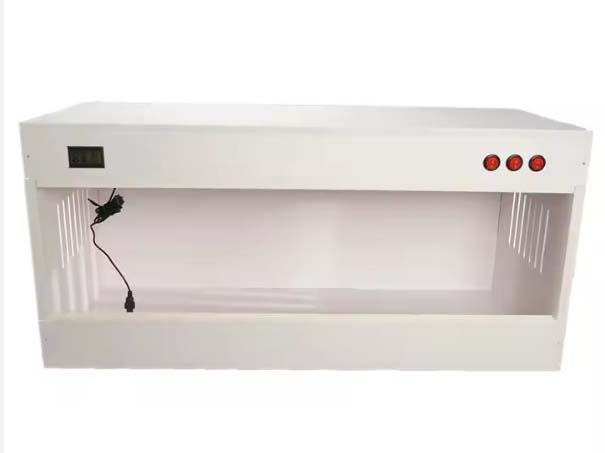
Shopee/Lazada search:
PVC Reptile Enclosure
~Php 6,500 to 12,000
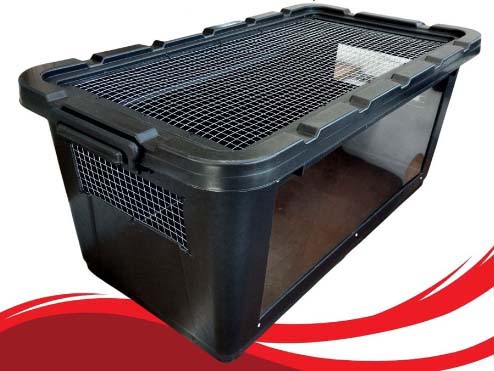
Shopee/Lazada search:
Bin cage for reptiles
~Php 1,300 to 1,800
If you are just starting the hobby, it's better to go for the cheaper option first. If you're ready to take it to the next level, then you can go for more expensive and more aesthetic enclosures. The bin cages are actually just a modified black plastic storage box that's common here in the Philippines. It's usually sold for hamsters and other reptiles but it suits tortoises as well. A baby tortoise would appreciate either the 100L or 135L bin cage. For PVC enclosures, the 80x40x40cm option would be a good start.
Enclosure Item 2 of 11: Substrate
Normal Option (left) VS Practical Option (right)

Shopee/Lazada search:
Zoomed Forest Floor or Cypress Mulch
~Php 420
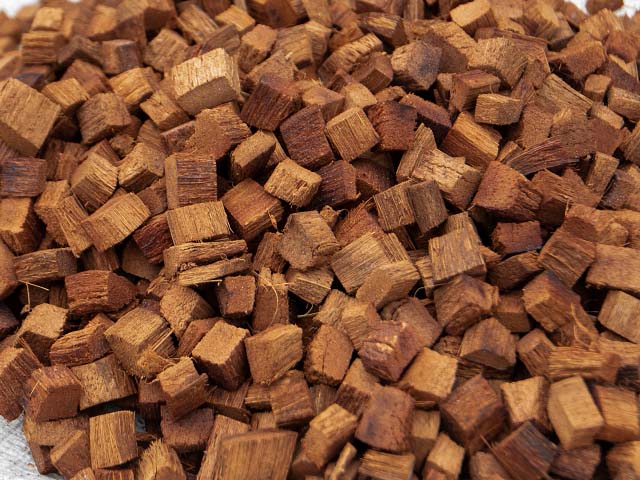
Shopee/Lazada search:
Coco Chips/Cubes or Coco Coir
~Php 50
Coco chips and coco coir, which are locally available and cheap, hold moisture and will keep the enclosure humidity closer to the ideal range of around 75% to 85%, similar to Cypress Mulch. Humidity is essential for a healthy tortoise and smooth shell growth. You can dive deeper and research about the effects of humidity on tortoises when you have time.
Enclosure Item 3 of 11: Reptile Mat
Normal Option (left) VS Practical Option (right)
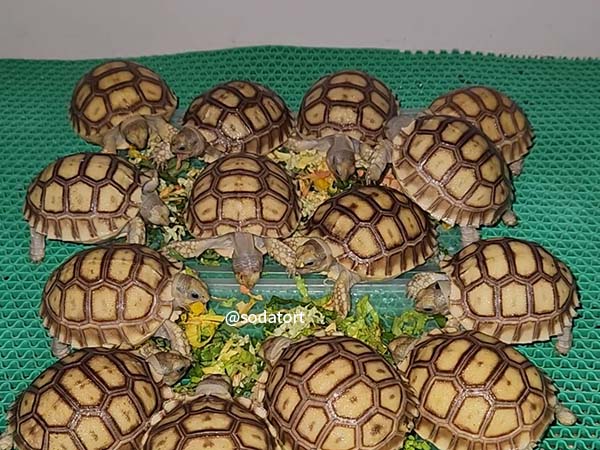
Shopee/Lazada search:
S-shaped rubber mat or terrarium/reptile mat
~Php 499
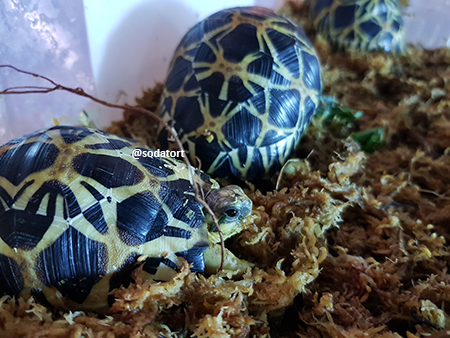
Shopee/Lazada search:
No reptile mat, direct to substrate
None
This type of matting is popular with tortoise keepers in Asia and will keep the tortoises from eating the substrate, which in very rare cases causes gut impaction and even death. There are a lot of reports about this in forums and groups so do you own research. In the US, the popular style is to go all natural so they let the tortoises roam directly on the substrate, so you can definitely do this as well. With the reptile mat on top of the substrate, it also keeps the tortoise from getting messy but will still let the moisture go through. It also has good traction which means tortoises can walk well and develop their leg muscles properly. Be sure to brush and clean the mat regularly. We use the brand Armour Exotics available in Shopee. If you try other brands, make sure it doesn't smell toxic as your tortoise's nose will be near it the entire time. Also check that it's durable and doesn't break down easily because it will get wet and dry multiple times.
Enclosure Item 4 of 11: Water Dish
Normal Option (left) VS Practical Option (right)
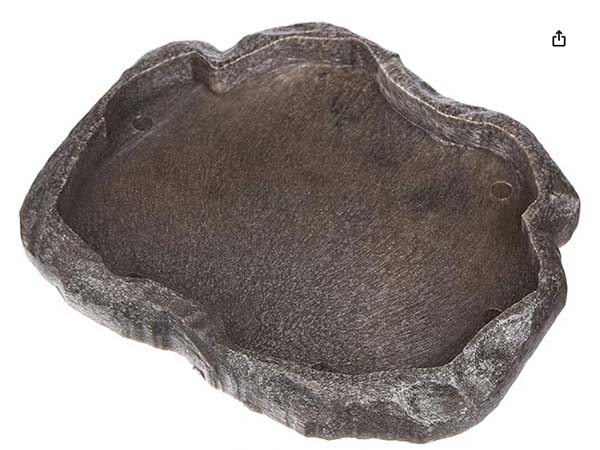
Shopee/Lazada search:
Reptile Water Dish
~Php 400
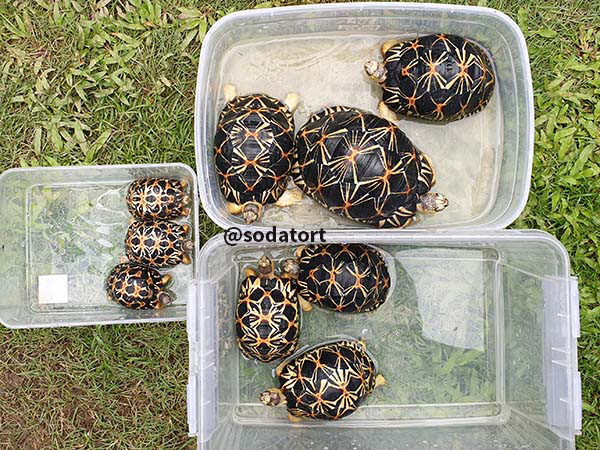
Shopee/Lazada search:
You can do daily soaking
FREE
Some hobbyists prefer to initiate the soaking/drinking rather than leaving a water dish which the tortoises can quickly get dirty (and will have to be changed multiple times in one day). Google "how to soak tortoises" if you're a beginner. Basically, just soak your baby tortoise in shallow water for 15 to 30 minutes daily. If you still prefer to leave a water dish for them, one option is to use a shallow jar cover similar to the red Stick-O cover.
Enclosure Item 5 of 11: Food Dish
Normal Option (left) VS Practical Option (right)
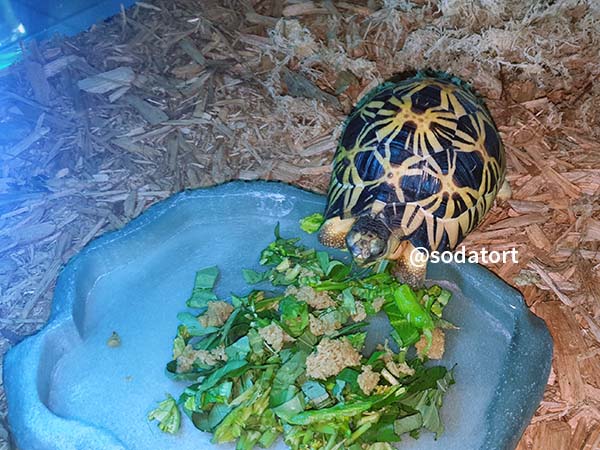
Shopee/Lazada search:
Zoomed food dish for reptiles
~Php 260
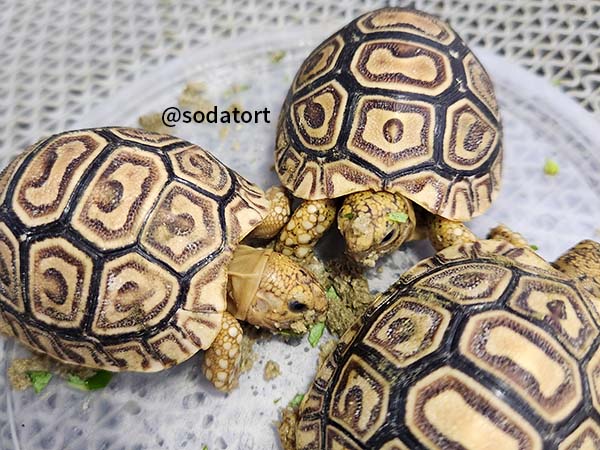
Shopee/Lazada search:
You can use the cover of a food container
FREE
This is where you put chopped leaves, etc. Remove this a few hours after eating even if there's still some food left. Leftovers will attract roaches and other insects especially if left overnight.
Enclosure Item 6 of 11: Reptile Hide or Cave
Normal Option (left) VS Practical Option (right)

Shopee/Lazada search:
Tortoise cave or hide box
~Php 2500
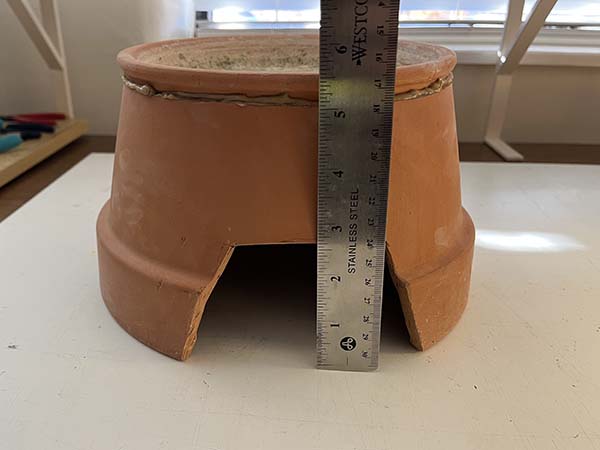
Shopee/Lazada search:
Clay or plastic pot
~Php 50
Tortoises need a place to feel hidden and safe; or a place that's more enclosed or humid. As mentioned, your humidity readings will play a vital role in your tortoise's health.
Enclosure Item 7 of 11: Lighting (UVB)
Normal Option (left) VS Practical Option (right)
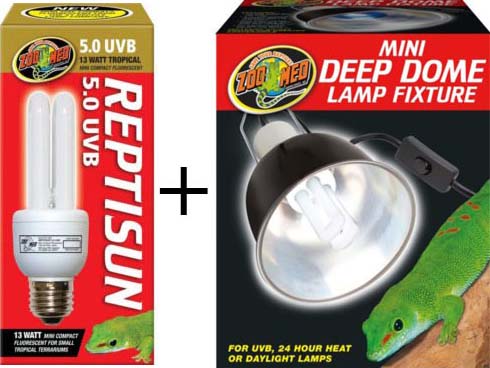
Shopee/Lazada search:
UVB Lights for Reptiles & Dome
~Php 1800
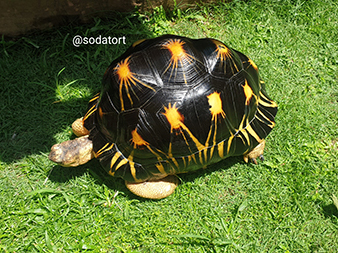
Shopee/Lazada search:
You can use natural sunlight
FREE
Be sure to position your enclosure where they can get some morning sunlight for at least 1.5 hours. Baby tortoises in the wild spend most part of the day hiding so they don't really need to be exposed to UVB for a long time. Also make sure the sun isn't super direct as they can overheat and die. To be safe, make sure that half of the enclosure is shaded so they can hide anytime. Be sure to monitor the temperature! More about temperature below. If this is too much work for you, you can automate this using the more expensive option plus a digital timer switch. For UVB, our go-to brand is Zoomed's Reptisun.
Enclosure Item 8 of 11: Heating
Normal Option (left) VS Practical Option (right)

Shopee/Lazada search:
Ceramic Heat Emitter (CHE) + Thermostat
~Php 900

Shopee/Lazada search:
N/A. You can use the PH temperature cycle
FREE
In Manila, we get a temperature range of about 24C to 34C all year. Inside our homes, the range is more controlled. Like in our place, we get to around 33C during noon and drops to only about 26C late at night. Luckily, this range is already fit for most tortoises. Just don't put them in a room with airconditioning. Or if you live in Baguio, then you naturally won't have this temperature range. Please always measure your temperature and humidity to make sure you are more or less getting this range. Night-time temperature drops occur naturally in the wild and is actually beneficial to all reptiles (unless your tortoise is sick). Note: If you still want to use a CHE or any kind of heater, please buy a thermostat as well because the CHE alone can cause overheating and death, or worse, house fire! There's been several reports on this in cooler countries since they are forced to use CHEs or reptile heaters. Here in the Philippines, we're very lucky.
Enclosure Item 9 of 11: Thermometer with Hygrometer
Normal Option (left) VS Practical Option (right)

Shopee/Lazada search:
Thermometer with Hygrometer
~Php 900
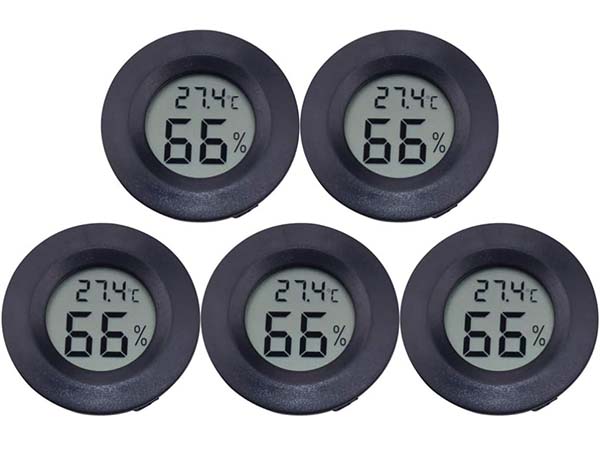
Shopee/Lazada search:
Thermometer with Hygrometer (generic)
~Php 150
Use this to measure and monitor your temperature and humidity as mentioned thrice above. Whatever brand you choose, this aspect is very important.
Enclosure Item 10 of 11: Tortoise Food
Normal Option (left) VS Practical Option (right)
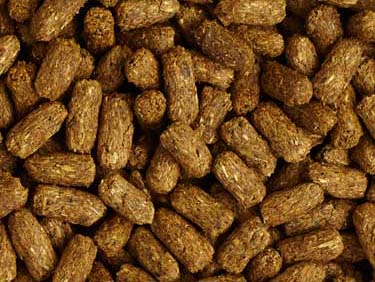
Shopee/Lazada search:
Tortoise Food
~Php 450 per 500 grams
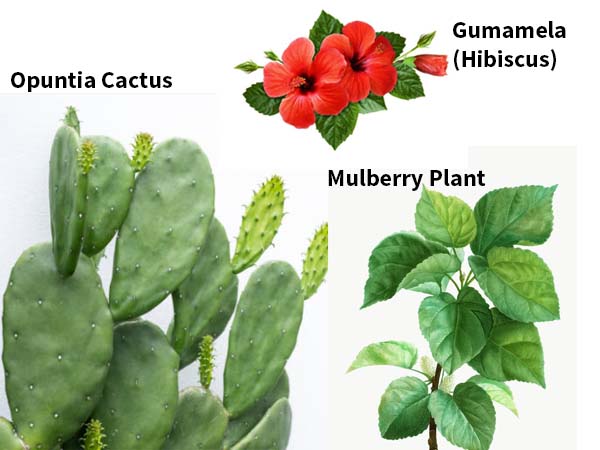
Shopee/Lazada search:
Mulberry, or Gumamela, or Opuntia Cactus
~Php 200 initial; FREE after
Plant once and harvest free tortoise food forever, go all natural! You can also buy only the leaves of Mulberry in Shopee. But if you don't have space or time and prefer to feed commercial food, cheap but quality brands are Kama/Porpoise, and Inch-Gold. Kama/Porpoise have cactus in their ingredients and Inch-Gold is grass-based, which are all great! Or get and mix both. Look them up in the Alibaba app if you plan to buy in bulk and import via CargoBoss or similar services in Facebook. Same goes for PVC Reptile Enclosures.
Enclosure Item 11 of 11: Calcium, Vitamins and Supplements
Normal Option (left) VS Practical Option (right)
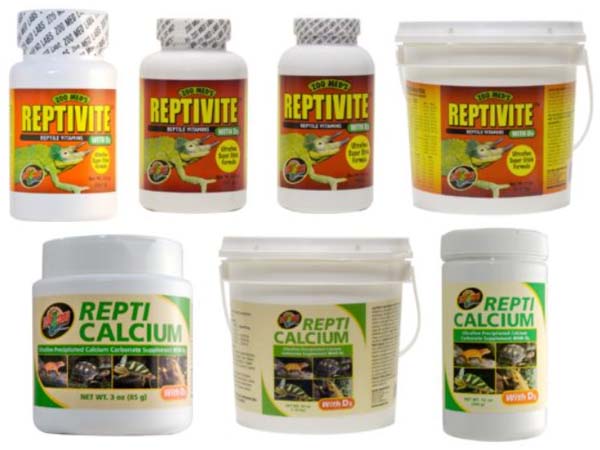
Shopee/Lazada search:
Reptile Calcium and Multivitamins
~Php 900 total

Shopee/Lazada search:
N/A. You can go for a varied diet
FREE
You can go for variety to meet the needed nutrition. Feed different plants and vegetables that are allowed for tortoises. There are a lot of resources about this so research well. If you really have to give them supplements, check Zoomed's products, an excellent US brand. If you want to go local, research calcium carbonate (food grade) and also multivitamins for poultry that are available in Shopee AND compare the ingredients. It's important that you do your own research.
Jump to listFAQ: What do you feed your torts?
Tortoise Diet
Most of the tortoise food that we see online are not easily available in the Philippines such as dandelion, kale, etc. So here's a list of what I feed them. I've already compared notes with fellow hobbysists, so below are the things we have in common.
Please note that they are fed once daily with the following: mulberry leaves, gumamela (hibiscus) leaves and flowers, grated opuntia cactus pads, grated kalabasa, romaine lettuce, pechay Baguio, saluyot, and mashed tortoise food pellets (brands like Kama and Inch-Gold), all supplemented with reptile calcium and multivitamins. It's important to maintain a varied diet, so make sure to incorporate a range of other plants and vegetables as well.
If you were to feed quickly, go for all-natural and plant your own mulberry plant, gumamela plant and opuntia cactus. Plant once and you'll never have to spend for tortoise food again (especially if you keep only a few tortoises)!
How much to feed? One guide is to feed a pile of cut leaves almost as big as the tortoise's shell. Another guide is to feed as much as it can eat in 20 to 30 minutes. These are just rough guidelines and it's important to observe your tortoise and adjust accordingly. Also do your own research on what's best.
Plants you can buy in Philippine garden shops. Plant once and get free tortoise food forever!
- Mulberry leaves (cuttings are available in Shopee and FB Marketplace, established plants are available in online garden shops)
- Gumamela leaves and flowers (available in garden shops in Manila)
- Opuntia Cactus (available in garden shops in QC Circle and online)
- Grass (Carabao, Bermuda, Frog Grass, and also napier grass, cat grass and timothy grass and hay).

Radiated tortoises eating mulberry leaves, gumamela leaves and flowers, and mashed commercial tortoise food
Vegetables You can Buy in Philippine Groceries and Markets
- Romaine Lettuce
- Pechay Baguio
- Saluyot
- Talbos ng Kamote
- Kangkong
- Pepino (Cucumber)
- Kalabasa (no need to cook, just peel, grate, or slice thin strips)
- Sliced Okra without the seeds (occassionally)
- Fruits such as avocado, melon, watermelon, and dragonfruit are suitable for fruit-eating tortoise species including Redfoots, Emys, and Yellowfoots.
Commercial Tortoise Food available in Shopee / Lazada
- Kama (Porpoise) tortoise food - ingredients include opuntia cactus, which is great and cheap too!
- Inch-Gold tortoise food - grass-based, good quality and much cheaper
- Zoomed tortoise food - grass-based, excellent US brand so it can get expensive here
- Mazuri tortoise food
- Sera Raffy Vital
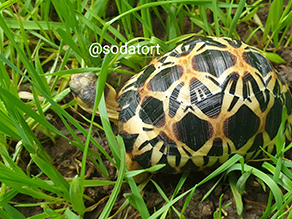
A young tortoise on fresh grass

Soda stealing a quick bite of Opuntia while I was just getting the camera
SUPPLEMENTS
- Reptile Calcium. Buy one without D3 if your tortoise gets natural sunlight 2-3 times per week). As an alternative, search "Calcium Carbonate food grade" in Shopee or Lazada.
- Reptile Multivitamins. (Once a week)
- Probiotics. You can mix this to their drinking water. Just search for "Probiotics for pets" in Shopee and Lazada. The brand we currently use is Natural Organic Essentials.
- *All these are available in Shopee / Lazada
For more tortoise food options, below is an excellent tortoise food database from "The Tortoise Table". I suggest you check it out:
Jump to listWarning: If you're just starting to get into the tortoise hobby, you can read until here to avoid information overload. The first two sections above already give you a mix of everything you need to get started. But if you're ready, you can continue reading below.
FAQ: What does your outdoor setup look like?
Outdoor Setup
For our bigger tortoises that are more than 7 or 8 inches, they're always in the garden. Rain or shine, I keep them there. Except for when there are typhoons, then they are moved inside the house. But do note that there should be numerous shaded areas and hiding spots to hide from the Philippines's extreme weather (like when the sun is intense and when the rain goes on for too long). Also make sure your place is secure. This is important because tortoises that are around 8 to 10 inches can still be attacked and bitten by rats, stray cats and dogs. You know we have a lot of these in Manila!

This is one section of the outdoor setup of our adult Radiated tortoises.
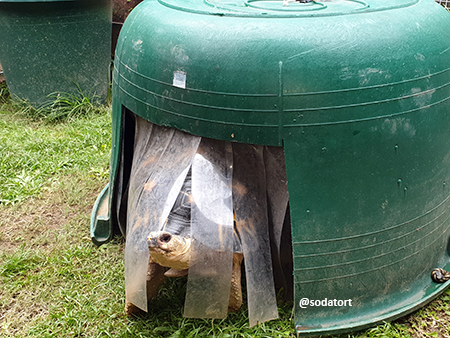
Soda's old tortcave is just an inverted plastic pot. It has served its purpose for several years. The curtain in front is called "PVC Curtain". This keeps the rain from going inside. Radiated tortoises and most species can withstand temperature drops at night or during rainfall as long as they stay dry (in Philippine climate). But do not let them get wet & cold. They can get sick!
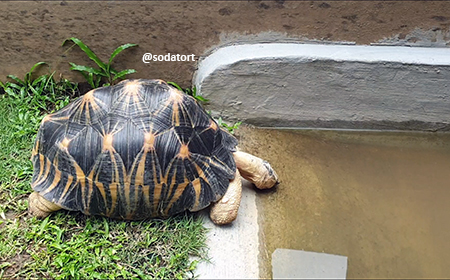
Soda drinking in his outdoor mini-pond and soaking area
FAQ: Why Keep Tortoises As Pets?
Why choose tortoises?
In the Philippines, turtles or tortoises aren't very popular. They're typically seen as unlucky or "malas". People also mistake them as slow and boring. So I really do get asked this question a lot!
I really think tortoises make great pets. The hobby has grown a lot over the last several years. Even local celebrities and successful local businessmen keep several including high-end species such as Radiated and Aldabra tortoises. Their success continues despite keeping these shelled creatures. So no, they're not unlucky at all! All other countries consider them lucky except in the Philippines, which is strange.
Here are my reasons:
1) They can outlive you. Bigger species like Radiated tortoises and Aldabras can live up to 150-200 years. You can pass them on to your children.
2) They are surprisingly friendly and cute. They look boring at first but when they thrive and get comfortable with you and the environment you provide them, then their personalities will come out. Mocha, my Sulcata follows me around like a dog. Most of my Radiatads, especially Soda, will approach me to have their head and feet scratched. The list goes on. They are simply adorable.
3) They're quiet. They don't bark or chirp and don't make noise except when they are mating, which actually sounds funny.
4) Their poop doesn't smell. Unlike cats, dogs, rabbits, and even poultry and livestock, tortoise poop doesn't have a strong smell because it's composed primarily of greens, grass and fiber.
5) They're relaxing to watch. I love watching them walk with grace despite carrying their heavy shells. I never get tired of watching them eat. And watching baby turtles hatch is priceless.
6) They make great investments. They can only get more valuable as they grow bigger.
7) They won't escape very easily. They're not very good climbers because of their heavy weight and high domed shells. Some can still climb and escape though, Pancake torts and Manouria emys are some examples of excellent climbers.
8) They're good listeners. As the saying goes, "Ikwento mo sa pagong." Just kidding
9) I like the community of local tortoise hobbyists. They are simple people with a quiet sense of humor. They are responsible and they always think long term. They find joy in the simplest things. But they dream big and commit to it.
10) They're low maintenance. My monthly expenses is relatively cheap for the number of tortoises that we feed. Also, the work routine is pretty simple. Once you've established a good set-up and routine, they're very simple to take care of and won't require your attention 24/7.
11) They're beautiful. Beauty is subjective but there are a lot of tortoises that are very pretty to look at, like special morphs or high yellows, or tortoises that have very smooth, round and high-domed shells. I believe each tortoise is unique and special.
12) It's fun to monitor their growth and see them get bigger. I usually take pictures for future reference. And it's amazing to look back at those pictures and see how much they've grown.
Jump to listFAQ: What's the best tortoise species for beginners?
Tortoises For Beginners
In the Philippines, budget is usually an issue for those who are just starting the hobby. With that, we can recommend the two most common tortoises in the country, Sulcatas and Redfoots. They're common because they're easier to raise and breed than most tortoise species.
Sulcata: For beginners who want a tortoise that grows big. Typical selling price is around Php 7,000 to 10,000 for a 2.25 to 3-inch Sulcata. Sulcata tortoises have one of the fastest growth rates for tortoises. It can grow from 2.25 inches to around 10 inches in 2 years and around 16 inches in 4-5 years. It also increases its value as it grows. Full-size adults may cost at least Php 120,000 and even more for females.
Sulcatas are also very hardy compared to other species but this doesn't mean they don't get sick due to improper care. Same goes for all species. Beginners usually think that when a species is hardy, they can neglect some of their basic needs. They can still easily get sick and eventually die when given incorrect care. Getting the correct temperature and humidity is key.
Redfoot: Redfoots cost around Php 8k for 2.5 to 3.5 inches (Cherry-head Redfoots are more expensive). A very hardy species. But they do require higher humidity so that their shells can grow smoothly. They are more prone to pyramiding when kept in a dry enclosure. Research more about "Effects of Humidity on Tortoise Growth and Pyramiding" and also "Closed chamber setup for tortoises". Once properly setup, Redfoot tortoises are very tough and can easily tolerate temperature drops in Manila (this is assuming that the torts are healthy).
More Expensive Tortoises
Fellow Filipino hobbyists who are successful in taking care of these newbie species usually take their hobby up a notch by trying more challenging or more expensive tortoise species. When you see your first few tortoises getting bigger, healthier and friendlier, you will definitely want more! Tortoises have that effect. Unfortunately, a lot of beginners never graduate from that stage because most of the tortoises they get are either already sick or eventually get sick due to wrong information, neglect, or incorrect care.
But those who are successful find great joy in taking care of these misunderstood animals. These keepers then proceed to the next level:
-Indian Star: For beginners who want tortoises that have a beautiful pattern and stay small. They do well here in the Philippines and was once the most popular tortoise pet in Asia. I remember back in 1999, I bought mine for Php 750. Each year the price kept on increasing. During the pandemic, I heard prices reach up to Php 35,000. Stars don't grow big. Full size males are around 5.5 to 6 inches and full size females are around 8.5 to 10 inches, which they usually reach in around 5 years.
-Leopards: Imports are senstive to temperature drops and are prone to RI (Respiratory Infection). Locally-bred leopard tortoises are strong and stable. Plus they grow to be very beautiful!
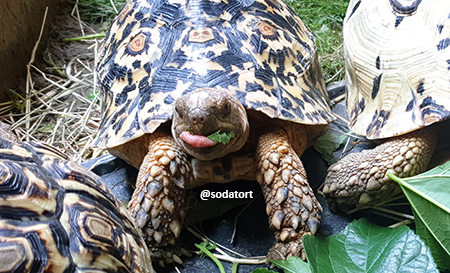
Leopard Tortoise sticking out its tongue
-Radiata: Serious tortoise enthusiasts in the Philippines either have one or dream of having one! It is a consistent favorite of tortoise hobbyists worldwide. Radiateds have a classic tortoise shape with beautiful patterns that are unique from each one. For me, they are the friendliest species I've handled since 1999 because they actually let you pet them. They literally stop what they're doing and stand still when you do. I've only seen this exact behavior in Yniphoras, Aldabras and Galapagos tortoises. They are the biggest of the "starred" species but are smaller than Sulcatas. In the long run, their size makes maintenance a more sustainable and more practical. My full grown Rads can be carried and moved by older folks when needed. You can't do that for Sulcatas or Aldabras. Radiateds also acclimate well to Philippine weather and can easily handle cold nights in Manila, the same way they do when it gets cold in Madagascar. This is assuming that your Rad is healthy.

With a semi-high yellow Radiated tortoise
-Aldabra: Also a favorite! A classic tortoise in every aspect. All-black beauty. A majestic giant! Who wouldn't want a tortoise that gets big in just 1-2 years? They're giants in 5 years, or at least 19 inches in 3 years to give you an idea. One must have the budget and space for this species. Ironically, they grow larger than Sulcatas but seem to require less space because of their gentle demeanor. Adult sulcatas can get restless and rowdy so they require bigger space.

Aldabra Tortoises eating Mulberry leaves
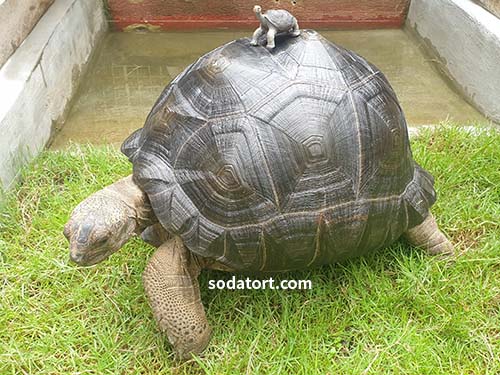
Aldabra Tortoise and a small tortoise replica
The list just goes on and on. There are a lot of other wonderful tortoise species like Yniphora, Spider tortoises, Burmese Mountain, etc! Each successful experience with one makes you want to try the next. Tortoises as a hobby is surprisingly addictive. Plus they're easier to maintain than other pets in the long run.
Jump to listFAQ: What's your humidity setting?
We aim for 75% to 85%.
Why is humidity so important?
There are endless discussions online about pyramiding and poor shell growth. In the early 2000s, pyramiding was thought to be caused by improper diet (too much protein, not enough calcium and fiber) and overfeeding which leads to fast growth and pyramiding. But in the mid-2000s, there has been many testimonials that pyramiding is caused by low humidity or having a setup that's too dry. There are still a lot of arguments about this statement. But in my experience, providing at least around 75-85% humidity does result in smoother shell growth and a healthier tortoise overall.
Luckily, we usually get 50-70% humidity in Manila. This increases to 80-90% when it rains. So we just need a little tweak in our environment and setup to reach the desired range of at least 75%, 85% being ideal for me. Some hobbyists like to take it up to 90-99%, that's okay too. I'm just more comfortable with 85% because I don't feel like they're "drowning" in the air's water content.
Jump to listFAQ: How often do you soak and bath?
Soaking Tortoises
When in doubt, soak daily especially during the Philippines' hot summer days. As a general guide, soak every other day or up to 4 times per week. Babies get soaked more often, while adults get soaked less. Adults usually have their own shallow pond or big water dishes.
To those who are new to tortoises, soaking is when you put tortoises in a non-toxic container, preferrably food-grade, fill it up with clean water that's below their chin, and leave them there for about 30 minutes or at least until they poop. It may sound gross but the tortoises drink here, and then after drinking, they will urinate and poop. It's a perfect way to keep them hydrated, to keep their internal system clean which prevents any formation of bladder stones, one of the common problems in tortoises.

Baby tortoise soaking
Bathing and Brushing
This really depends on how dirty they can get. When they get poop on their shells, then we brush them immediately. When you house only one tortoise, this can happen rarely. But if there are multiple tortoises in one enclosure then they can really get dirty quickly. Brush them up to once a day or at least 3 times a week. Adults seem to need to be brushed less. As a guide, always aim for clean shells because they can get fungus or shell rot.
Below you can see Soda enjoying a bath. We use a sponge or bigger brushes for adult tortoises and a tooth brush for smaller tortoises.
Soda keeps still while I brush his face
FAQ: Who's Your Vet?
I usually go to 2 vet clinics in times of trouble:
1) Vets on the Block. Their old address is 36 Champaca street, Quezon City 1103 Metro Manila but now they have a new one. You can search this in Google.
2) I also go to Vets in Practice in Mandaluyong. I've had a few consultations with Dra. Marga, Dr. Donato, Dr. Mau and Dr. Richard. Also they are quick to provide results for X-Rays, lab tests and stool tests.
There are more vets now who are very knowledgable on tortoises compared to 5-10 years ago. Feel free to explore and ask for recommendations in tortoise groups in Facebook. Also check out the Facebook page of "The House of Pets Veterinary Clinic".

With Dr. Rey, Soda and me in Vets on the Block
FAQ: How Do You Treat Sick Tortoises?
Treating Sick Tortoises
As much as possible, I let the professionals handle it. That's what vets are for. But over the years I've learned a few things about various tortoises diseases and issues and I've learned how to treat some of the more common problems. I can't say I've perfected this, but it sure has helped me a lot in this hobby. But it is not my job to discuss this in detail because I don't want to be held responsible for any mistakes that might occur because of what I say.
Let the professionals handle this. I've already given my recommended vets in the section above.
To those who insist and want to learn more, below is the link where I base all my experiements on. The page has been around for several years and it's truly a valuable resource. I cannot emphasize how much further reading, discussions, and research I've put to tortoise care and I do urge you to proceed with the same caution and diligence. Furthermore, when you do proceed to treat tortoises on your own and things don't work out, then there is no one else to blame but yourself. Harsh but true. Go to the vet, or accept the consequences.
www.anapsid.org Jump to listFAQ: Do you keep different species of tortoises together?
Mixing Different Tortoise Species
No, I don't keep them all together except maybe for taking pictures, which happens very rarely and which I only do for tortoises that I've kept for several years already.
There are a lot of articles written about this. It's important to do your own research.
Even for the same species, I keep different sizes separate and different batches separate too. So for example when I have new tortoises, I isolate them from my old ones. And sometimes males are separate from females even if they're the same species. Yes, maintenance becomes very difficult. But it keeps all of them healthy and alive!
Here are a few examples of my own experiences as well as some of my other fellow hobbyists:
- Male Redfoot adult showed signs of aggression towards a female Radiated tortoise. The Radiata got bit on her neck, bled out and died. Radiateds have thinner skin and less scales on their extremities. A female redfoot would have handled this aggression better.
- New Sulcata baby was introduced to a stable Sulcata group. Turned out the baby was sick and the entire Sulcata colony suffered with Respiratory Infection.
- Imported Elongata was mixed with healthy Redfoots that was part of an old collection. In a few weeks, all the RF's poop became watery. Turned out the Elongata had flagellates and all of them became infected.
- Smaller female Sulcata got seriously injured by a biger and aggressive male. Female Sulcata eventually died.
- Newly purchased Leopard tortoise is introduced to a stable collection of Radiated tortoise juveniles. After a few weeks, all of the tortoises had RI (Respiratory Infection).
- The list just goes on and on
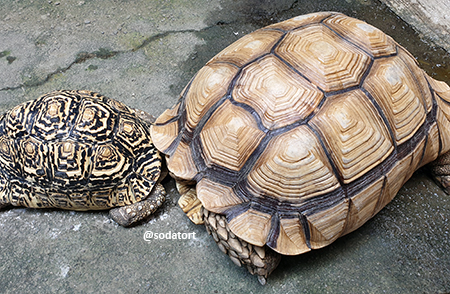
A brave male Leopard tortoise ramming a bigger female Sulcata tortoise
FAQ: How do I know if my tortoise is male or female? And when will they be sexually mature?
Sexing your tortoise
There are a number of ways to determine the sex of a tortoise (male has long tail and concave plastron). But until he shows his male organ, one can never be 100% sure.
On a sunny day in February 2010, during Soda's bath time, we confirmed that Soda is indeed a he! This usually happens when Radiated tortoises are at least 10 inches in length.
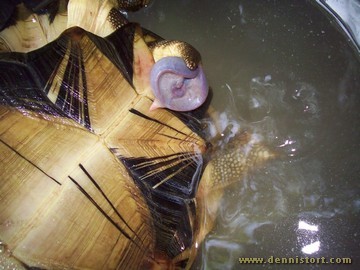
This was Soda when he was much younger at around 10 inches.
Typically, you cannot accurately determine the sex of a tortoise until it reaches a certain age or size. Occasionally, even before reaching the recommended size, there might be subtle indications of their sex, though these are not entirely reliable. If they appear male when smaller, they are likely to be male. However, they generally resemble females until they grow larger, at which point their actual sex may become more apparent.
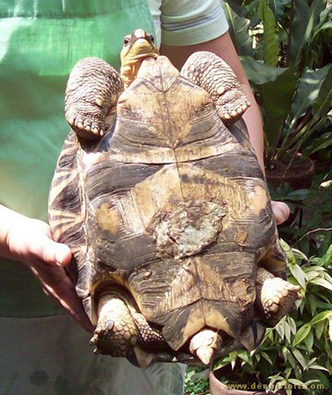
This is Cola, our female Radiata.
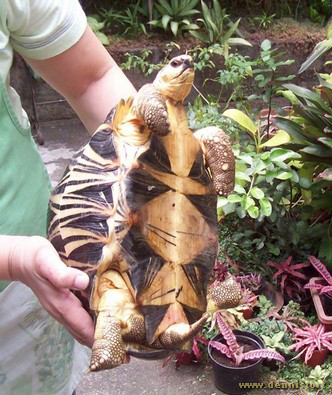
Notice the tail of Cola (1st pic to the left) is much shorter than Soda's tail (above) which curls and bends because of its longer length
Minimum size to determine the sex of a tortoise (This is a general guide. It is better to do your research on each species)
- Indian Star: ~4 inches to determine sex
- Sulcata: ~12 to 14 inches to determine sex
- Radiated: ~9 to 10 inches to determine sex
- Aldabra: ~26 inches to determine sex
- Spider: ~4 inches to determine sex
- Yniphora: ~11 inches to determine sex
- For other tortoise species, you can do a Google search
Things to watch out for when sexing a tortoise:
- Male organ - you will see this coming out of their tail usually when soaking
- Anal scutes - varies per species but in general when the opening is wider, it is male just like Soda's anal scutes.
- Shape of plastron - females have a flat plastron, males are concave
- Tail - longer for males
- Gular scutes - also varies per species but males have longer gular scutes for some species
- Overall shape of the shell - also varies per species but some species when the overall shape is elongated, they're male
FAQ: Is Soda an Indian Star?
Differentiating Radiated tortoises from Indian Star tortoises
Indian stars are commonly seen in pet shops in the Philippines, especially during the late 90s and early 2000s. So it is usual for people to mistake Soda, Cola and their babies for Indian Stars. There are a number of differences and I'll try to show them in pictures.

This was young Soda more than a decade ago when he was only 4.5 inches. Beside him is a male Indian Star tortoise of the same size.
- Size - Indian stars are smaller; full sized males are around 5.5 inches and females are around 8 to 9 inches. Radiateds may reach 15 to 16 inches for both male and female.
- Carapace Pattern - This depends on the individual, but Radiated tortoises usually have more rays on each scute of their shells.
- Scales - Stars have rougher scales on their feet. Radiateds look smoother and the scales feel thinner.
- Plastron Pattern - The shell pattern underneath is also very different.
Despite these differences, both tortoise species are equally beautiful. And as they say, beauty is in the eye of the beholder. This holds true for us here in Soda's Tortoise Garden because we love all tortoise species!

Adult female Radiated tortoise compared to an adult female Indian Star tortoise
FAQ: How do I know if my tortoise will be laying eggs soon?
Signs that your tortoise will be laying eggs
It is usually straightforward and the most common signs are restlessness and digging.
Females are restless even during times when she is usually asleep or hiding in her cave. Also, despite the absence of proper nesting sites, females may still attempt to dig even on cement. You'll notice this when their hind legs make circular movements alternating between their left and right leg. This is an urgent sign that you have to provide the correct nesting setup. For us, we just use plain garden soil. Depending on the species, the depth of the soil may range from 6 to 12 inches.
When you are not absolutely sure, an X-Ray will definitely tell you if your tortoise has eggs.
In the case below, we were worried about our female Star tortoise because she kept digging for several weeks but never laid any eggs. So we went to the clinic to get her an X-Ray to be sure she is not egg bound, a condition which can be fatal to tortoises.

Tortoise X-Ray taken on October 4, 2015 in Vets in Practice, Madaluyong. 3 eggs can be seen in the X-Ray. The thickness of the eggs look normal and not over-calcified. There doesn't seem to be any blockage either. So the only thing to do now is to wait for nature to take its course. I just have to make sure she is given a suitable nesting spot, fed well, and given sufficient calcium supplements
FAQ: What are the possible causes of tortoise deaths?
Tortoise Deaths
Below is just a summary of reasons. Please research each topic on your own. You may also join tortoiseforum.org as they have a lot of discussions there.
1) Respiratory Disease or Sipon. Unlike the common colds for humans, this is actually very serious for tortoises.
2) Virus. Usually happens when a tortoise is infected by another sick tortoise or reptile. This is why separating different species or new tortoises is important.
3) Incorrect temperature and humidity range. This may not kill a tortoise right away but it will impact its health and can be related to #1.
4) Dogs, cats, rats, ants. We have a lot of these in Metro Manila. Dogs, no matter how good they are, can and will attack a tortoise.
5) Bullying. I know of someone whose bigger Sulcata attacked and rammed a smaller sulcata. This sounds mild but can actually get bloody and deadly.
6) Drowning. I have a friend who left the water hose turned on while a tortoise was soaking and got distracted by something else. The water level rose up too high that the tortoise couldn't reach the surface to breathe. After a few minutes, the owner returned and found that the tortoise had already drowned.
7) Getting turned over for a long period. This stresses the tortoise and gives unnecessary pressure to the lungs and internal organs. This can also happen while soaking a tortoise (see #6).
8) Overheating. This happens sometimes in relation to #7, like on a hot day and they get turned over. This also happens when they are left basking under the sun at extreme temperatures and they have no other place to hide. Or when a heater is used incorrectly, or when used without a thermostat.
9) Fire. There have been a few cases when the heater inside the tortoise's enclosure got too hot and caught fire. This is very deadly not just for the tortoise but for everyone in the house. Also see #8.
10) Parasites. This is why regular stool tests and deworming (if necessary) are an important part of any tortoise keeper's routine.
11) Toxic Plants. Tortoises may eat plants that are not good for them as long as they are within reach.
12) Impaction due to swallowing too many pebbles or small rocks. This happens way too frequently especially for tortoises who are free to roam the yard.
13) Poor diet. Again, this won't kill a tortoise immediately but it will impact its health in the long run.
14) Falling from a condominium or a high-rise building. A lot of hobbyists in Manila live in condominiums so this is possible and has happened in other countries.

A Radiated tortoise and a stray cat in Manila, Philippines. Picture taken in 2003. No animals were harmed in this photo.
FAQ: Can I register my tortoise with DENR?
DENR CWR or Captive Wildlife Certificate
In summary, you can only register tortoises or exotic animals if you got them from sources who have a WFP (Wildlife Farm Permit). The WFP permittee would then be able to provide the buyer with an OR (Official Receipt) that's recognized by the DENR. This is proof that your pet purchase is legal. It also means that you are eligble to apply for a CWR (Certificate of Wildlife Registration). If you already have a CWR, it means that you can now add the newly purchased tortoise to your headcount by reporting this purchase through your regular QBR form (Quarterly Breeding Report). Note that getting a CWR is optional (though it is recommended by the DENR), so if you plan to get a CWR, just be sure to bring the OR (official receipt) and the newly acquired tortoise to your nearest DENR office. Example, if you bought a Sulcata tortoise from Soda's Tortoise Garden, we will issue you a DENR-recognized OR. You can then bring both the OR and the tortoise to the DENR-NCR office in East Avenue. However, you have to be an NCR resident because our WFP is based in NCR. If you reside outside NCR (or outside the WFP permitee's province), then you will need to ask for an LTP (Local Transport Permit) from the WFP permittee.
Below is DENR's infographic:
Terms:
- CWR - Certificate of Wildlife Registration
- DENR - Department of Environment and Natural Resources
- WFP - Wildlife Farm Permit
- OR - Official Receipt
- CBC - Captive-Bred Certificate
- LTP - Local Transport Permit
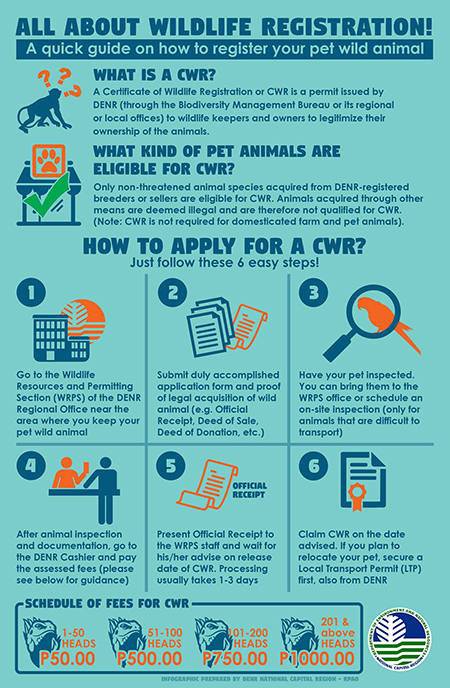
From DENR-NCR's Facebook page
FAQ: What's the importance of papers? Who is it for?
Importance of Tortoises with Papers
1) If you want to be safe from nosy neighbors, or jealous FB friends, or simply anyone who could potentially report something illegal, then torts with papers are for you.
Note: Papers include OR (official receipt) issued by a DENR-accredited entity who is also a WFP-holder, and/or a CBC (Captive-Bred Certificate) also given by the same WFP-holder, and/or an LTP (Local Transport Permit) issued by DENR if needed.
2) If you plan to get a CWR from DENR by registering your legally acquired tortoise(s), then torts with papers are for you.
Note: CWR-holders (Certificate of Wildlife Registration) are allowed to keep and breed the species that are listed in their CWR. They are not allowed to sell. There is some prestige in owning a CWR. It means you're a serious hobbyist with legally acquired animals recognized by DENR.
3) If you're an existing CWR or WFP-holder and would like to add a particular tortoise species (ie. Radiated tortoise) in your official list of legal species and headcount, then torts with papers are for you.
Note: WFP = Wildlife Farm Permit. It has a lot of requirements, one requirement is the CWR. WFP-holders are allowed to keep, breed and sell the species listed in their WFP.
Jump to listFAQ: Can I register my tortoises without papers in DENR to get a CWR?
No, you cannot. This was allowed during the 2004 amnesty but is no longer the case. You can only get a CWR by registering tortoises or exotic pets that were legally acquired and have papers.
Bonus Questions about Legality:
Can I bring my tortoises without papers to the vet? Yes, you can. Vets don't normally file complaints and report you to the DENR.
I have just acquired a tortoise with papers. Am I required to go to DENR and register? Technically, it is optional. Just be sure to keep the OR (official receipt). Your tortoise is still considered legal even if you don't register it. But do note that the DENR recommends that you register and get a CWR.
What if I have animals in my CWR and I no longer want them? Or, what if I have tortoises with papers and I need to give them away? DENR has a policy about giving a Deed of Donation but the rules aren't so clear. It is better to contact DENR-NCR regarding this matter.
Jump to listMore Topics Coming Soon
For additional questions, you may write us a message on our Facebook page:
http://www.facebook.com/sodatort
Jump to listAbout Us
Soda's Tortoise Garden is a private tortoise breeding facility that is accredited by DENR and BAI (Bureau of Animal Industry) located in Metro Manila, Philippines. We don't have a physical shop but you may coordinate with us via our Facebook page. Be sure to follow our page for our latest posts and stories. Learn More
Our first TV appearance at "Rise & Shine Pilipinas" by PTV 4.
Follow Us On Facebook
